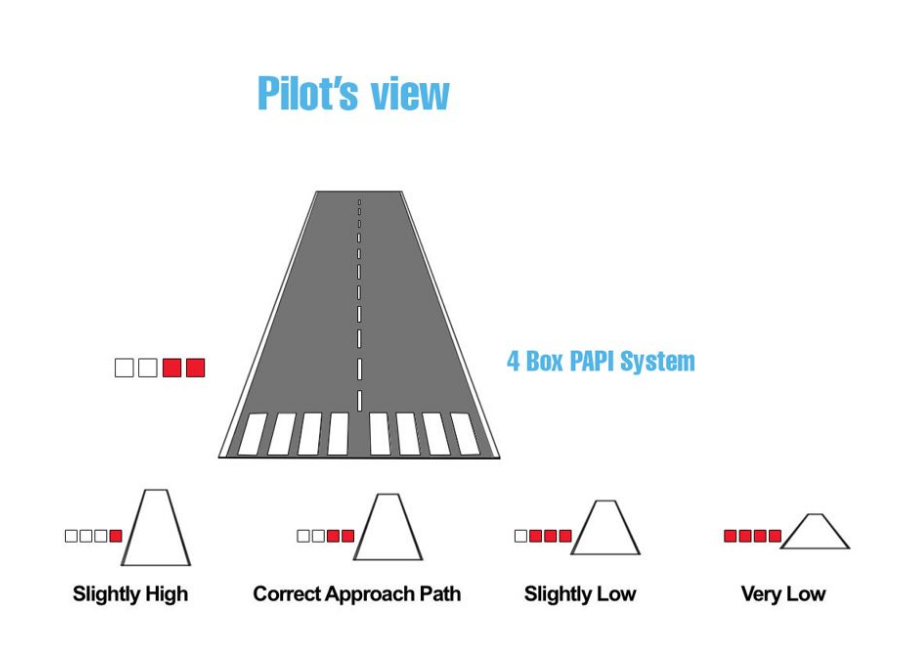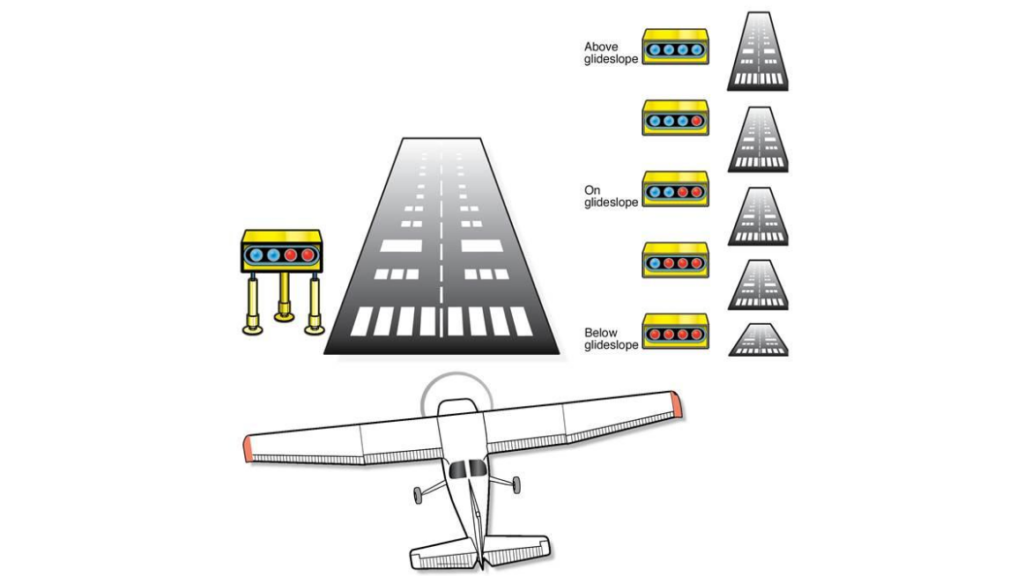PAPI lights refer to specific color-coded airport lighting close to a runway that passes a particular message to captains. Currently, they emit HIRL (high-intensity runway light), LIRL (low-intensity runway light), or MIRL (medium-intensity runway light).
What Pilots Must Know About PAPI Lights
Each runway adopts a PAPI lighting system that emits specific light patterns to send a message to an airplane flyer. Here are the most common lighting patterns to look out for:
4-white PAPI Lights
If the runway PAPI system emits four red light patterns, it implies the pilot is flying too high as they get ready for landing. Therefore, the captain needs to lower the plane slightly to land the airplane more safely.
4 Red PAPI Lights
If the lighting emits four red lights, the flyer is flying the plane too low and must fly it moderately higher. However, they should over-accelerate as they might not achieve the recommended angle during landing.
2 Red and 2 White PAPI lights
These lights indicate that the captain is on the recommended path to land the aircraft. Therefore, he must remain within this position lest they’ll endanger the lives of the passengers onboard.
3 Red and one white light pattern
This lighting pattern indicates that one is roughly 2.8 degrees lower on the glide path. Therefore, the pilot will have to make the necessary adjustment during landing.

How to Choose High-Quality PAPI Lights
Buyers should consider the below features when purchasing these airport lights.
-
Remote control
Good Airport lights for sale come with a remote control for aerodrome controllers to monitor these lights, particularly for busy airports. Therefore, they can notify the relevant department if the PAPI system of a given runway is faulty.
-
Multi-lamp technology
Dependable PAPI lights adopt the multi-lamp technology as it is brighter. Therefore, a pilot can see these indicator lights from a few meters above the ground.
-
Long visibility range
Manufacturers of these lights ensure they have a minimum visibility range of 8 to 10 kilometers.
-
Efficient remote monitoring
Airport staff monitor these lights to ensure they direct a pilot to the runway with a functional PAPI system. Therefore, the captain will maintain a standard glide-path angle.
Closing Thoughts
Aviation college instructors educate soon-to-be pilots on the meaning of a sudden change of PAPI lights for safety reasons. Therefore, captains can adjust the respective elevators to fly the plane higher or lower for landing.

